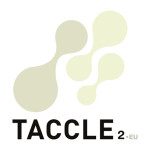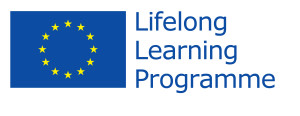Age 11yrs
Ease **
Overview:
This activity allows learners to create and develop a real mosaic using coloured stones/card squares to represent pixels. It helps them understand the theory of image production by studying the history of mosaic and the representation of electronic images produced by printers which operate using pixels and a limited colour palette.
Description:
Starting with a brief history of mosaics learners arrive at the present day where the most modern computer systems use this ancient technique to reproduce images. All monitors and printers use pixels as if they were many tight pieces of mosaic. Observing closely a printout learners analyse and understand the subtractive synthesis of colours, the three inks use primary subtractive colours (yellow, cyan and magenta) forming a tight net of drops like pieces of mosaic which, if observed from proper distance give a sensation of forming all colours.
Monitors also use three colours (additive synthesis of green red and blue in order to create all colours); this time the pieces of the mosaic are bright pixels.
Once these principles have been well understood the teacher will ask the students (or a pair of students) to create a mosaic with coloured pebbles; the children will be given yellow, cyan and magenta pebbles, white glue and a cardboard of 20x20cm. The children will experiment the subtractive synthesis which allows them to create all the colours by putting the pebbles more or less close to each other. The second stage in the activity is to create a digital mosaic through online freeware using the children’s own pictures which will become a “pixel” of a bigger picture which can be chosen by the class or by the teacher.
We used www.fmedda.com and whilst the software elaborates the mosaic the teacher should explain ‘colour grading’ to learners and run through examples of combinations showing how the program chooses pictures by considering them pixels.
What do I need?
Projector, computer, pebbles, glue, cardboard, brushes, online freeware for mosaics www.fmedda.com , PCs
Keynote (or Power Point), Photoshop: Keynote is for presenting the images of the real mosaics, to show how an image is pixilated/show the texture of monitors and printer images. Photoshop is to show how each colour and image is divided into different channels RGB or CMYK.
Added value:
Learners will begin to understand colour synthesis which is created digitally by monitors and printers. They can experiment with the combination of primary colours to create different colours.
Hints and tips:
Learners will discover the beauty of this ancient design approach and understand the current developments on how the digital world is the product of a very dense mosaic of pixels. Both modern monitors and all printing systems use pixels as if they were pieces of mosaic, with the distinction that the only colours used are yellow, cyan, and magenta. Pebbles can be bought (in IKEA the cost is approx £1/kg). With 1 Kg you can make about 10 mosaics of 15x20cm. If the pebbles cannot be sourced, you can make mosaics with coloured cards but we suggest the mosaic be enlarged to at least an A5 format.
Safety:
There are no safety implications in using this software.
Other opportunities to use the same software:
- Learners can create self-portraits using coloured card mosaics. These can then be scanned and uploaded to an online gallery.
- Learners can turn their mosaics into jigsaws at www.jigsawplanet.com




 English
English Nederlands
Nederlands Deutsch
Deutsch Italiano
Italiano Español
Español Português
Português Română
Română Cymraeg
Cymraeg
No comments yet.